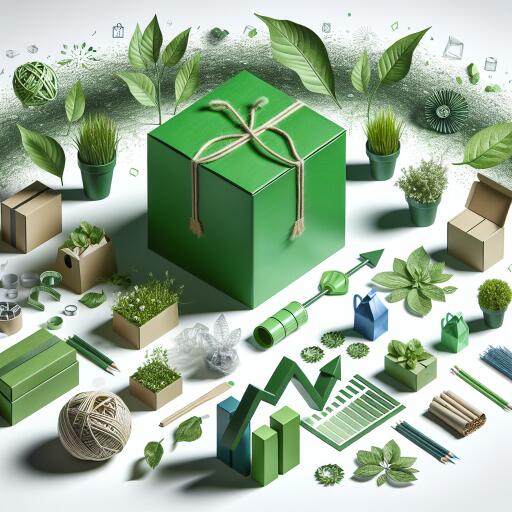Sustainable Solutions: Driving Growth in the Green Packaging Market
The green packaging market, valued at USD 312.5 billion in 2023, is projected to soar to USD 529.0 billion by 2030, growing at a robust CAGR of 6.8% during the forecast period. This market is defined by a wide array of sustainable packaging solutions aimed at reducing the environmental impact across the product lifecycle, from the sourcing of raw materials to the end-of-life disposal of the product. The focus of green packaging is to diminish the carbon footprint, preserve natural resources, and reduce waste generation by leveraging eco-friendly materials, innovative designs, and efficient manufacturing processes.
As environmental awareness increases, along with regulatory initiatives and corporate commitments to sustainability, the green packaging market has witnessed significant growth. This article delves into the dynamics, trends, and developments, presenting a comprehensive overview of the green packaging market.
Market Dynamics
The demand for sustainable packaging solutions across various industries such as food and beverage, cosmetics, pharmaceuticals, and consumer goods catalyzes the expansion of the green packaging market. This growth is fueled by the rising environmental consciousness among consumers, stringent regulations on plastic usage and waste management, and the sustainability goals of corporations. Innovations in materials, including bioplastics, recycled paper and cardboard, compostable polymers, and bio-based foams, are pivotal in promoting sustainable packaging solutions. These materials are designed to minimize reliance on fossil fuels, reduce carbon emissions, and enhance circularity and resource efficiency.
Consumer Preferences and Regulatory Landscape
Consumer demand for eco-friendly products and packaging significantly influences the adoption of green packaging solutions. Studies show that a considerable segment of consumers prioritizes sustainability and environmental responsibility in their purchasing decisions, opting for products in recyclable, biodegradable, or compostable packaging. This shift in consumer preference not only fosters the growth of green packaging but also offers a competitive edge to brands that commit to sustainability.
Furthermore, the regulatory frameworks and policies on packaging materials and waste management are instrumental in shaping the green packaging market. Governments around the globe have implemented regulations to encourage recycling, curb single-use plastics, and promote sustainable packaging practices. These regulations often include extended producer responsibility (EPR) schemes, bans on certain plastics, and requirements for packaging labeling.
Key Trends
The push towards a circular economy is stimulating innovation and investment in green packaging solutions that emphasize resource conservation, material reuse, and closed-loop systems. Moreover, the growing awareness of plastic pollution has increased the demand for biodegradable and compostable packaging options. These materials, derived from renewable sources, offer an eco-friendly alternative to conventional plastics by enabling natural degradation and minimizing harmful environmental impacts.
Integrating smart and intelligent technologies into green packaging enhances its functionality, traceability, and consumer engagement. Innovations like RFID tags, QR codes, and NFC technologies enable product authentication, supply chain transparency, and interactive consumer experiences. Such technologies empower consumers to make informed choices and contribute to reducing packaging waste through enhanced product lifecycle management.
Recent Developments and Future Outlook
In recent developments, significant advancements have been made in introducing plant-based bioplastic packaging solutions derived from renewable resources such as corn, sugarcane, and cellulose. These new materials offer performance comparable to conventional plastics while being biodegradable and compostable, meeting the growing demand for sustainable packaging across different industries.
Additionally, collaborative initiatives among industry stakeholders and environmental organizations aim to accelerate the adoption of green packaging practices. These collaborations are centered on optimizing resources, reducing waste, and conducting lifecycle assessments to foster systemic changes in packaging design and waste management practices.
The expansion of recycling infrastructure, supported by government and industry associations, aims to enhance the recovery and recycling rates of green packaging materials. These efforts are crucial for promoting a circular economy approach to packaging waste management.
In conclusion, the green packaging market is poised for significant growth and innovation, driven by the demand for sustainable products, regulatory pressures, and industry initiatives aimed at reducing environmental impact. As sustainability becomes an ever-more pressing priority, green packaging solutions are expected to play a critical role in the future of packaging innovation and sustainable consumption.
